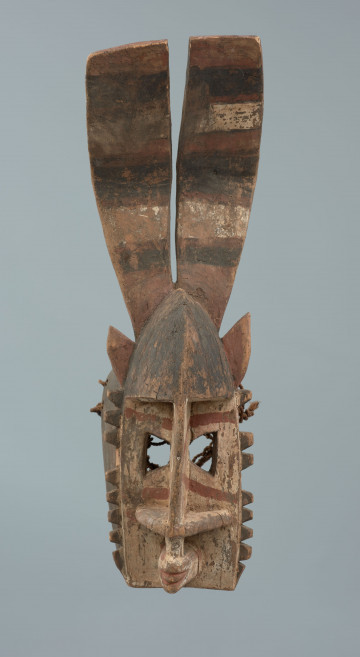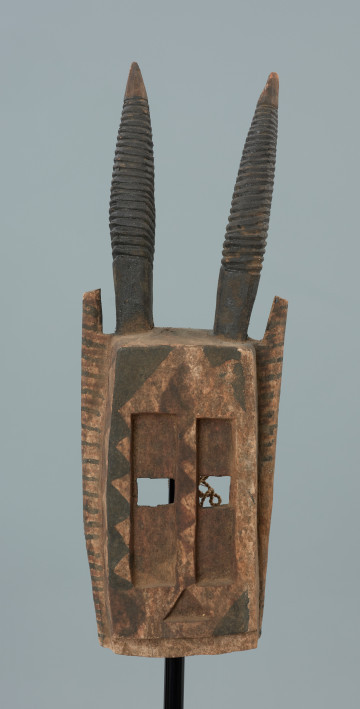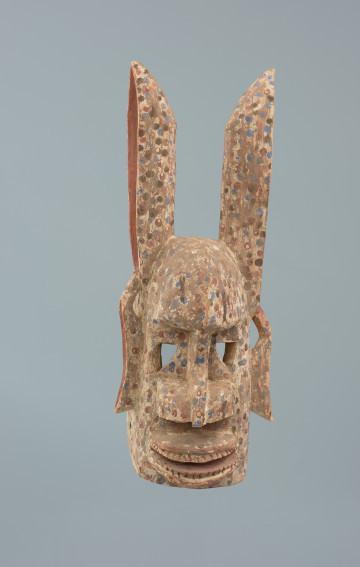
Gomintogo mask
między 1951 — 2000
National Museum in Szczecin
Part of the collection: Collection of Dogonian art
Dogon masks are associated with funeral rituals. Burial, the final farewell to the deceased and his nyama force, is a multi-stage process in the Dogon, varying according to the sex, position and age of the deceased. Burial usually takes place on the day of death. Sometimes, when death occurs in the evening, the body is buried only in the morning of the next day. The deceased from villages on the Plateau and at the foot of the Massif are buried in rock niches called kommo (caves), while those from villages on the Plain are buried in cemeteries located in places unsuitable for cultivation, usually on the outskirts. There are special cemeteries for certain groups of people, such as those belonging to a caste (blacksmiths, leather workers, etc.) and women who die during menstruation, pregnancy or childbirth. A few days after the burial, a baga bundo ceremony is organised. During the ritual, the deceased is symbolised by a funeral blanket, and the final event is a hunter's dance and accompanying gunshots fired into the air. Dama as the final farewell to the deceased takes place several years after the actual funeral. The organisation of this festival requires long and expensive preparations, sometimes involving several families. One of the tasks of Dama (besides expelling nyama of the deceased to the ranks of the ancestors) is to raise the prestige and reputation of the deceased and, indirectly, of his descendants. The Dama ritual lasts six days, during which the masks dance in the village main square, on the terrace of the deceased's house and in the sacred fields of Hogon. Finally, the soul of the deceased, housed in an object characteristic of his profession (a hoe - in the case of a farmer, tongs - for a blacksmith, etc.) is removed from the village, then destroyed, and the remains abandoned in the bush. Deceased women are also given Dama, but dancing in masks occurs only in the case of Dama Yasigine, the only female member of the male Awa society.
Ewa Prądzyńska
Author / creator
Dimensions
cały obiekt: height: 31 cm, width: 24 cm
Object type
sculpture, mask
Creation time / dating
Creation / finding place
Identification number
Location / status

między 1951 — 2000
National Museum in Szczecin

między 1976 — 2000
National Museum in Szczecin

między 1951 — 2000
National Museum in Szczecin
DISCOVER this TOPIC
National Museum in Szczecin
DISCOVER this PATH
Educational path